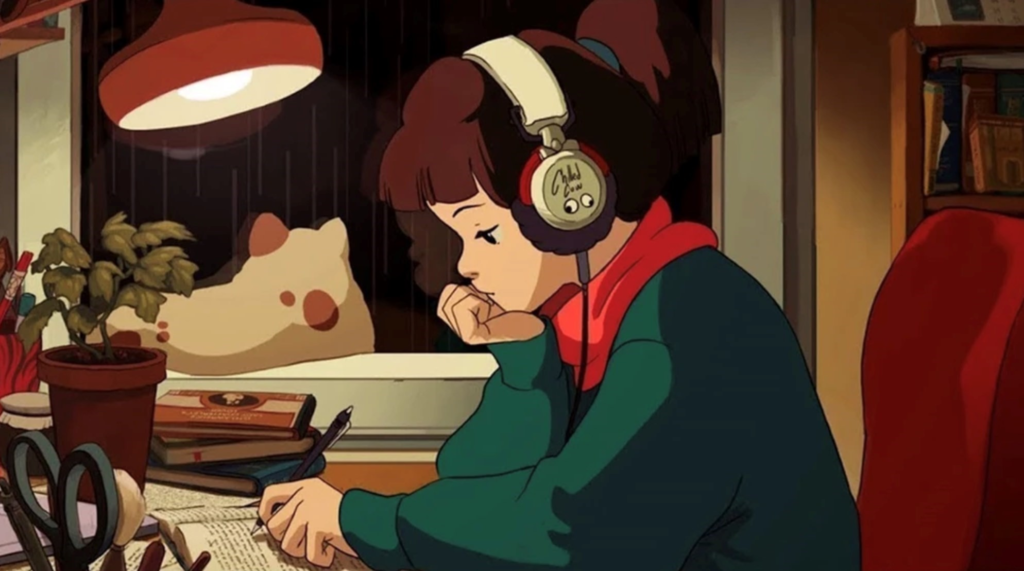Lofi music is the new wave: The evolution of an underground genre

Lofi music stands for low-fidelity music, it is the opposite of high-fidelity music. Think vinyl. High-fidelity music, namely, is the high-quality music production behind most mainstream music nowadays.
Unlike Hi-fi music that is precise and perfect in every detail, lofi music contains audible imperfections such as background noise or performance mistakes; Lo-fi music happens when the music is recorded with inexpensive equipment.

Despite its imperfect nature, lofi music celebrates an authentic aesthetic, unique beauty of its own kind. Most of the time, the genre is non-lyrical. If you hear people’s voices, they are likely from samples of early television or radio recordings.
In the last ten years, the genre has flourished on platforms like YouTube and Soundcloud. Throughout the years, it has drawn millions of listeners. But why are music producers and common people so obsessed with lofi music? We investigate.
The evolution of lofi music
Even if lo-fi music has just gained much attention in the recent decade, something similar to it has been around since the 50s. Errors and mistakes in the recording process are admired in the genre; they are even sometimes intentionally created to enhance the listening experience.
People who listen to lo-fi music for the first time can get hooked on to its rhythm easily. The ambiance that the music brings to the audience is relaxing and embracing; it is like a chill community. In a way, we can say it provides listeners with a sense of belonging.
Lo-fi music is its own genre, but its characteristics are frequently added to other genres of music as well. According to MasterClass, in the 80s and 90s, “many punk, indie rock, and hip-hop artists pursued a lofi aesthetic for economic and artistic reasons.”
Contemporary Lo-fi music started when live streaming began to flourish on YouTube in 2013. Lo-fi pioneer Nujabes, for instance, has played an important role in promoting this genre of music on social media.
His 2004 soundtrack, Samurai Champloo, combines Lo-fi and Japanese animation and adds some visual elements to the livestreams. Other known Lo-fi artists on YouTube are French artist ChilledCow (now Lofi Girl), Netherlands-based Chillhop Music, Chilli Music, and etc.
Benefits of lofi music
How do you identify lo-fi music? Well, it has three key characteristics. First, drum loops form its rhythms. Second, jazz chords create relaxed and thoughtful quality. Lastly, samples build connections between different mediums.
Lo-fi music serves many purposes in our everyday life. Students put it on as background music to help them concentrate while studying. As Brenden Lutes writes, the technical flaws such as distortion, background noise, or limited frequency response in the music can trigger the cerebrum and help people focus.
Music therapists use it to assist patients in coping with their stressful surroundings. lo-fi music carries a therapeutic purpose. It soothes anxieties and helps its listeners articulate their emotions better.
Why is lo-fi becoming a trend?
It’s great to integrate Lo-fi music into your personal project.
As slow music, Lo-fi releases Serotonin – a neurotransmitter known as “Happy Hormone”, increases Dopamine, and decreases Cortisol (a stress hormone). The music itself produces positive neurophysiological effects that help increase brain activities. Moreover, other benefits that Lo-fi music bring are improved cognitive ability, elevated mood, reduced anxiety, and restorative effects.
But why is lofi music so good? Because it motivates us to be more productive and performative in our projects. When we experience improvements in our progress, we feel the urge to further pursue our passions and increase our commitments.
Furthermore, lofi music is known for its power to help people find their communities online. Utilizing lofi music as the background music in your project, in this case, allows people to connect and communicate while checking out your work.
What does lofi music say?
Just because lo-fi is an “imperfect” production of music doesn’t mean it’s shallow. Behind its chill beats, lo-fi music sings people’s needs to seek for a safe haven in contemporary society. More importantly, it subtly reflects people’s struggles and their intentions to reclaim calmness in the chaos.
Listening to lo-fi is not simply to relax. It is a spiritual journey of communication that connects different souls. To hear a story, to be touched, and to generate empathy. And within these deeply felt emotions, we attain a higher level of creativity and enlightenment.

